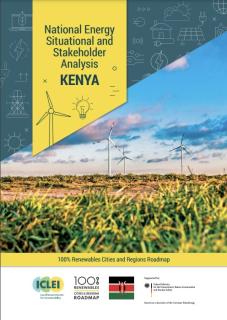
As a developing country, Kenya is still characterized by low access to electricity. However, the country wants to achieve universal electricity access by 2022 through main grid densification, intensification and expansion as well as off-grid solutions.
In addition to confronting energy access issues, and in support of the Paris Agreement, Kenya has announced its commitment to achieving a 30% reduction in its national greenhouse gas (GHG) emissions by 2030, relative to the business-as-usual scenario of 143 MtCO2e. Kenya’s Nationally Determined Contribution (NDC) has identified six main sectors responsible for the country’s GHG emissions, where mitigation efforts are focused: energy (electricity generation); transportation; agriculture; land use, land-use change and forestry [LULUCF]; industrial processes and waste.
This report provides an overview of Kenya's Vision 2030, which promotes the development of renewable energy as an alternative source of energy, in an effort to transform the country into an industrializing, middle-income country.
